Why Do People Like Donald Trump? Donald Trump’s enduring appeal is a complex phenomenon rooted in a variety of factors, including his economic policies, stance on immigration, and his connection with a specific segment of the population. At WHY.EDU.VN, we delve into the reasons behind his popularity, examining the political landscape and voter motivations, offering insights into understanding Trump’s support and appeal, and covering conservative values.
1. Understanding Donald Trump’s Enduring Popularity
Donald Trump’s political ascent has been nothing short of remarkable. To understand why do people like Donald Trump, it’s essential to consider the multifaceted layers of his public image, policies, and the socio-political climate that propelled him to prominence. His appeal isn’t monolithic; rather, it resonates differently with various segments of the population.
1.1. The Outsider Appeal: Challenging the Status Quo
One of the primary reasons for Trump’s popularity lies in his image as an outsider. Unlike traditional politicians, Trump positioned himself as a businessman and a non-establishment figure.
- Anti-Establishment Sentiment: Many voters were tired of the traditional political class, viewing them as out of touch and ineffective. Trump tapped into this sentiment by criticizing both Democrats and Republicans, promising to “drain the swamp” in Washington.
- Breaking Political Norms: Trump’s unconventional communication style, characterized by unfiltered language and directness, resonated with those who felt alienated by polished, carefully crafted political rhetoric.
- Promise of Change: Trump’s supporters believed he would bring real change to Washington, challenging the status quo and shaking up the established order.
1.2. Economic Policies and Promises: Making America Great Again
Trump’s economic platform was a cornerstone of his appeal. His promises to revitalize American industry, renegotiate trade deals, and create jobs resonated with many voters.
- Job Creation: Trump promised to bring back manufacturing jobs to the United States, particularly in states hit hard by deindustrialization. This pledge appealed to blue-collar workers and those who felt left behind by globalization.
- Tax Cuts: The Tax Cuts and Jobs Act of 2017, a signature achievement of the Trump administration, significantly lowered corporate and individual income taxes. Supporters viewed this as a boost to the economy and a way to stimulate job growth.
- Trade Protectionism: Trump advocated for protectionist trade policies, imposing tariffs on goods from countries like China. This was intended to protect American industries from foreign competition and encourage domestic production.
- Deregulation: Trump’s administration pursued deregulation across various sectors, arguing it would reduce burdens on businesses and spur economic growth.
1.3. Immigration Policies: Securing the Border
Immigration was a central theme in Trump’s political messaging. His tough stance on illegal immigration and his promise to build a wall on the U.S.-Mexico border galvanized his supporters.
- Border Security: Trump’s supporters viewed strong border security as essential for national security and economic stability. The promise to build a wall resonated with those who believed in stricter immigration enforcement.
- Enforcement of Immigration Laws: Trump’s administration increased enforcement of existing immigration laws, leading to more deportations and stricter vetting procedures.
- Travel Ban: Trump implemented a travel ban on several Muslim-majority countries, citing national security concerns. This policy was controversial but supported by those who believed it was necessary to protect the country from terrorism.
- Ending Chain Migration: Trump advocated for ending “chain migration,” the process by which legal immigrants can sponsor family members to come to the United States.
1.4. Cultural Issues: Appealing to Conservative Values
Trump’s stance on cultural issues also contributed to his popularity, particularly among conservative and religious voters.
- Social Conservatism: Trump aligned himself with social conservative positions on issues such as abortion, religious freedom, and traditional family values.
- Judicial Appointments: Trump appointed conservative judges to federal courts, including the Supreme Court. This was a major priority for conservative voters who wanted to see the judiciary shift to the right.
- Religious Freedom: Trump emphasized the importance of religious freedom and took steps to protect religious organizations and individuals from perceived discrimination.
- “Culture War” Issues: Trump often weighed in on “culture war” issues, such as debates over political correctness, free speech, and national anthem protests, aligning himself with those who felt their values were under attack.
1.5. Identity and Belonging: A Sense of Community
Beyond specific policies, Trump’s appeal also stemmed from a sense of identity and belonging that he fostered among his supporters.
- Nationalism: Trump’s “America First” rhetoric resonated with those who felt a strong sense of national pride and believed that American interests should be prioritized above all else.
- Feeling Represented: Many Trump supporters felt that he understood and represented their concerns, particularly those who felt ignored or marginalized by the mainstream media and political establishment.
- Community and Solidarity: Trump’s rallies and events created a sense of community and solidarity among his supporters, reinforcing their belief in his message and their commitment to his cause.
- Us vs. Them Mentality: Trump often framed political issues in terms of “us” versus “them,” creating a sense of shared identity and purpose among his supporters while simultaneously demonizing his opponents.
Understanding the reasons behind Donald Trump’s popularity requires a nuanced approach that considers his policies, his communication style, and the broader socio-political context. His ability to tap into anti-establishment sentiment, promise economic revitalization, and appeal to cultural conservatives played a significant role in his rise to power.
2. Key Demographics and Voter Motivations
To truly grasp the complexity of why do people like Donald Trump, it is essential to examine the key demographics and voter motivations that underpinned his support. His appeal transcended traditional political boundaries, drawing in a diverse coalition united by shared concerns and aspirations.
2.1. White Working-Class Voters: The Rust Belt Appeal
One of the most significant demographic groups supporting Trump was white working-class voters, particularly in the Rust Belt states.
- Economic Discontent: Many of these voters felt left behind by globalization and deindustrialization, leading to economic insecurity and resentment towards the political establishment.
- Job Losses: The decline of manufacturing industries in states like Pennsylvania, Ohio, and Michigan resulted in significant job losses, creating a sense of economic anxiety and a desire for change.
- Trade Policies: Trump’s criticism of free trade agreements like NAFTA and his promise to bring back manufacturing jobs resonated with these voters, who believed that trade policies had negatively impacted American workers.
- Cultural Identity: Beyond economics, many white working-class voters also felt that their cultural values were under attack, leading them to embrace Trump’s rhetoric on issues such as immigration, patriotism, and traditional values.
2.2. Rural Voters: A Rejection of Urban Elites
Rural voters, particularly in the Midwest and South, were another key demographic group supporting Trump.
- Cultural Divide: Many rural voters felt alienated from urban elites and the perceived liberal bias of mainstream media and cultural institutions.
- Economic Concerns: Rural communities faced unique economic challenges, including declining agricultural incomes, lack of access to healthcare, and limited job opportunities.
- Gun Rights: Trump’s strong support for gun rights resonated with rural voters, who often viewed gun ownership as an essential part of their identity and way of life.
- Traditional Values: Rural voters tended to be more socially conservative, aligning with Trump’s positions on issues such as abortion, religion, and family values.
2.3. Evangelical Christians: A Moral Imperative
Evangelical Christians formed a crucial part of Trump’s base, driven by religious and moral considerations.
- Religious Freedom: Trump’s promise to protect religious freedom and appoint conservative judges to federal courts was a major draw for evangelical voters.
- Opposition to Abortion: Trump’s stance against abortion and his support for the pro-life movement resonated with evangelical voters, who viewed abortion as a moral issue.
- Moral Values: Evangelical voters were drawn to Trump’s emphasis on traditional moral values, such as family, faith, and patriotism.
- Strategic Voting: Some evangelical voters, while not necessarily endorsing Trump’s personal behavior, viewed him as a strategic choice to advance their religious and political goals.
2.4. Small Business Owners: Reducing Regulations
Small business owners were another important constituency for Trump, attracted by his promises of tax cuts and deregulation.
- Tax Relief: Trump’s tax cuts for businesses were seen as a way to stimulate economic growth and create jobs, benefiting small business owners who often faced financial challenges.
- Deregulation: Small business owners often complained about the burden of government regulations, and Trump’s promise to reduce regulations was seen as a way to make it easier to run a business.
- Economic Optimism: Trump’s pro-business rhetoric and his emphasis on economic growth created a sense of optimism among small business owners, who believed that his policies would lead to increased prosperity.
2.5. Voters Seeking Change: An Alternative to the Status Quo
Beyond specific demographics, Trump also attracted voters who were simply seeking change and felt that the political establishment had failed them.
- Anti-Establishment Sentiment: Many voters were tired of traditional politicians and the perceived corruption and ineffectiveness of the political system.
- Frustration with the Status Quo: Voters who felt that their concerns were being ignored by the mainstream media and political establishment were drawn to Trump’s outsider status and his willingness to challenge the status quo.
- Desire for a Strong Leader: Some voters were attracted to Trump’s image as a strong leader who was willing to take decisive action to solve problems.
- Hope for a Better Future: Trump’s promise to “Make America Great Again” resonated with voters who felt that the country was in decline and that he could restore it to its former glory.
Understanding the key demographics and voter motivations behind Trump’s support requires a nuanced analysis of economic, cultural, and political factors. His ability to appeal to a diverse coalition of voters, united by shared concerns and aspirations, played a crucial role in his success.
3. The Role of Media and Communication Strategies
An examination of why do people like Donald Trump must include the role of media and communication strategies that propelled him to prominence. His ability to bypass traditional media gatekeepers and communicate directly with his supporters was a key factor in his success.
3.1. Social Media Mastery: Direct Communication with Voters
Trump’s adept use of social media, particularly Twitter, allowed him to communicate directly with voters, bypassing traditional media outlets.
- Unfiltered Messaging: Trump used Twitter to share his thoughts and opinions directly with his supporters, without the filter of journalists or editors.
- Rapid Response: Trump used Twitter to respond quickly to criticisms and attacks, shaping the narrative and controlling the message.
- Grassroots Mobilization: Trump used social media to mobilize his supporters and organize rallies and events.
- Bypassing Traditional Media: Trump’s social media presence allowed him to bypass traditional media outlets, which he often criticized as biased and unfair.
3.2. Rally Culture: Cultivating a Strong Base
Trump’s rallies were a key component of his communication strategy, creating a sense of community and reinforcing his message.
- Creating a Spectacle: Trump’s rallies were often large and boisterous events, attracting significant media attention and creating a sense of excitement and enthusiasm.
- Reinforcing the Message: Trump used his rallies to reinforce his key messages, such as “Make America Great Again” and his criticism of the political establishment.
- Building Community: Trump’s rallies created a sense of community among his supporters, who felt that they were part of a movement.
- Direct Engagement: Trump used his rallies to engage directly with his supporters, answering questions and listening to their concerns.
3.3. “Fake News” Narrative: Undermining Mainstream Media
Trump frequently attacked mainstream media outlets, accusing them of spreading “fake news” and being biased against him.
- Creating Distrust: Trump’s attacks on the media created distrust among his supporters, who were more likely to believe his version of events.
- Controlling the Narrative: By undermining the credibility of mainstream media, Trump was able to control the narrative and shape public opinion.
- Alternative Media Ecosystem: Trump’s attacks on the media created an alternative media ecosystem, consisting of conservative news outlets, blogs, and social media accounts that supported him.
3.4. Populist Rhetoric: Appealing to Emotion
Trump’s communication style was characterized by populist rhetoric, appealing to emotion rather than reason.
- Simple Language: Trump used simple, direct language that was easy for voters to understand.
- Emotional Appeals: Trump appealed to voters’ emotions, such as anger, fear, and patriotism, rather than relying on logic and reason.
- Personal Attacks: Trump often used personal attacks against his opponents, which resonated with voters who were tired of traditional political correctness.
- Exaggeration and Hyperbole: Trump often used exaggeration and hyperbole to make his points, which captured voters’ attention and made his message more memorable.
3.5. Strategic Use of Controversy: Keeping the Spotlight
Trump often used controversial statements and actions to keep himself in the spotlight and dominate the news cycle.
- Generating Media Coverage: Trump’s controversial statements and actions generated significant media coverage, ensuring that he remained in the public eye.
- Dividing the Opposition: Trump’s controversial statements and actions often divided the opposition, making it harder for them to mount a united front against him.
- Appealing to His Base: Trump’s controversial statements and actions often appealed to his base, reinforcing their support and solidifying their loyalty.
The role of media and communication strategies in Trump’s rise to power cannot be overstated. His mastery of social media, his rally culture, his “fake news” narrative, his populist rhetoric, and his strategic use of controversy all contributed to his success.
4. Policy Achievements and Their Impact
An important aspect of understanding why do people like Donald Trump involves examining the policy achievements of his administration and their impact on various sectors of society. These policies, whether praised or criticized, played a significant role in shaping his support base.
4.1. Tax Cuts and Jobs Act: Economic Stimulus or Benefit for the Wealthy?
The Tax Cuts and Jobs Act of 2017 was a signature legislative achievement of the Trump administration, significantly lowering corporate and individual income taxes.
| Feature | Description |
|---|---|
| Corporate Tax Rate | Reduced from 35% to 21%, aimed at making U.S. businesses more competitive globally. |
| Individual Tax Cuts | Lowered income tax rates for most individuals, with varying degrees of benefit depending on income level. |
| Standard Deduction | Nearly doubled, reducing the number of people who itemize deductions. |
| Business Deductions | Allowed for immediate expensing of certain business investments, incentivizing capital investment. |
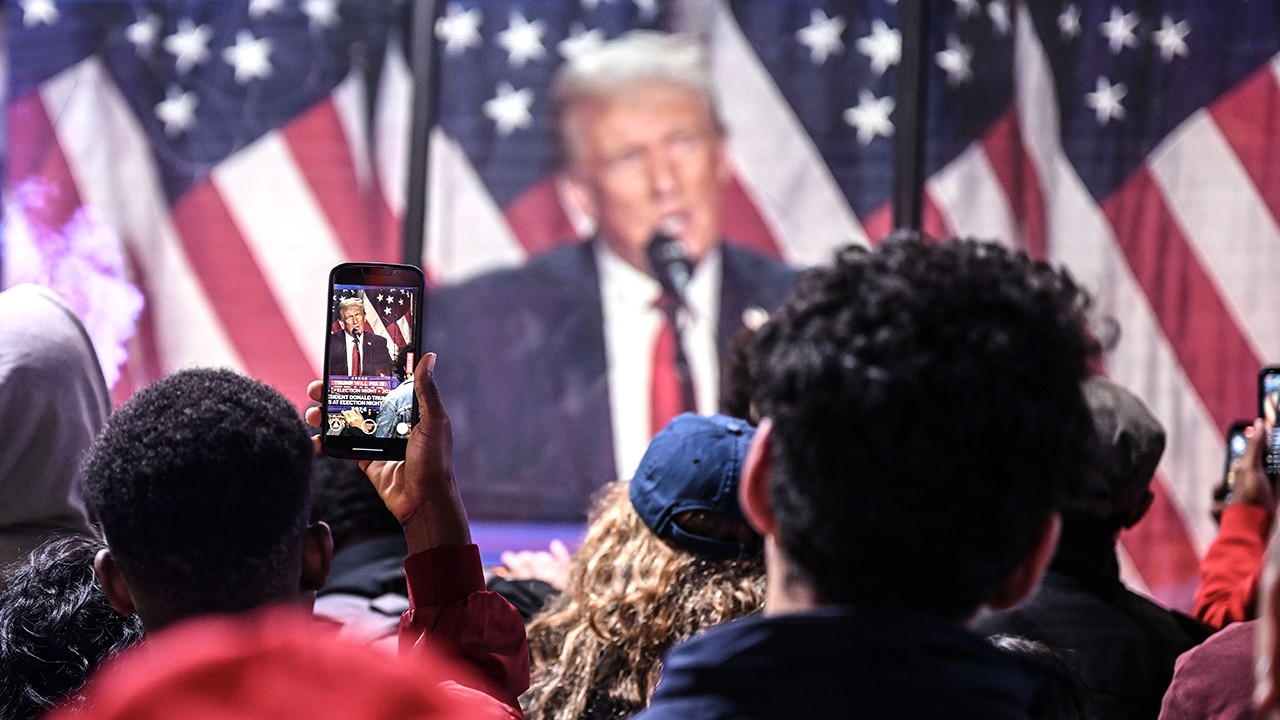
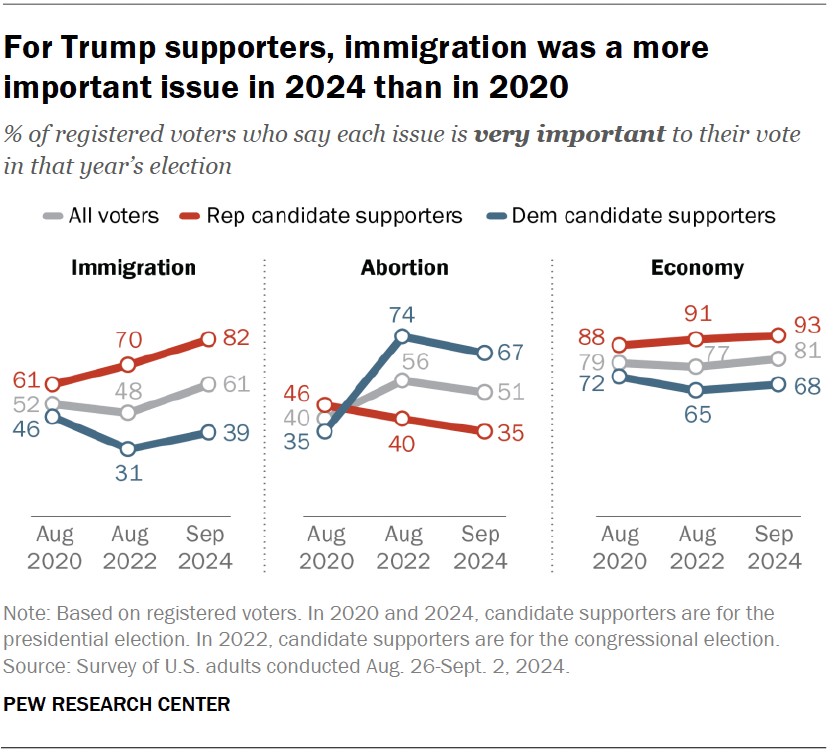
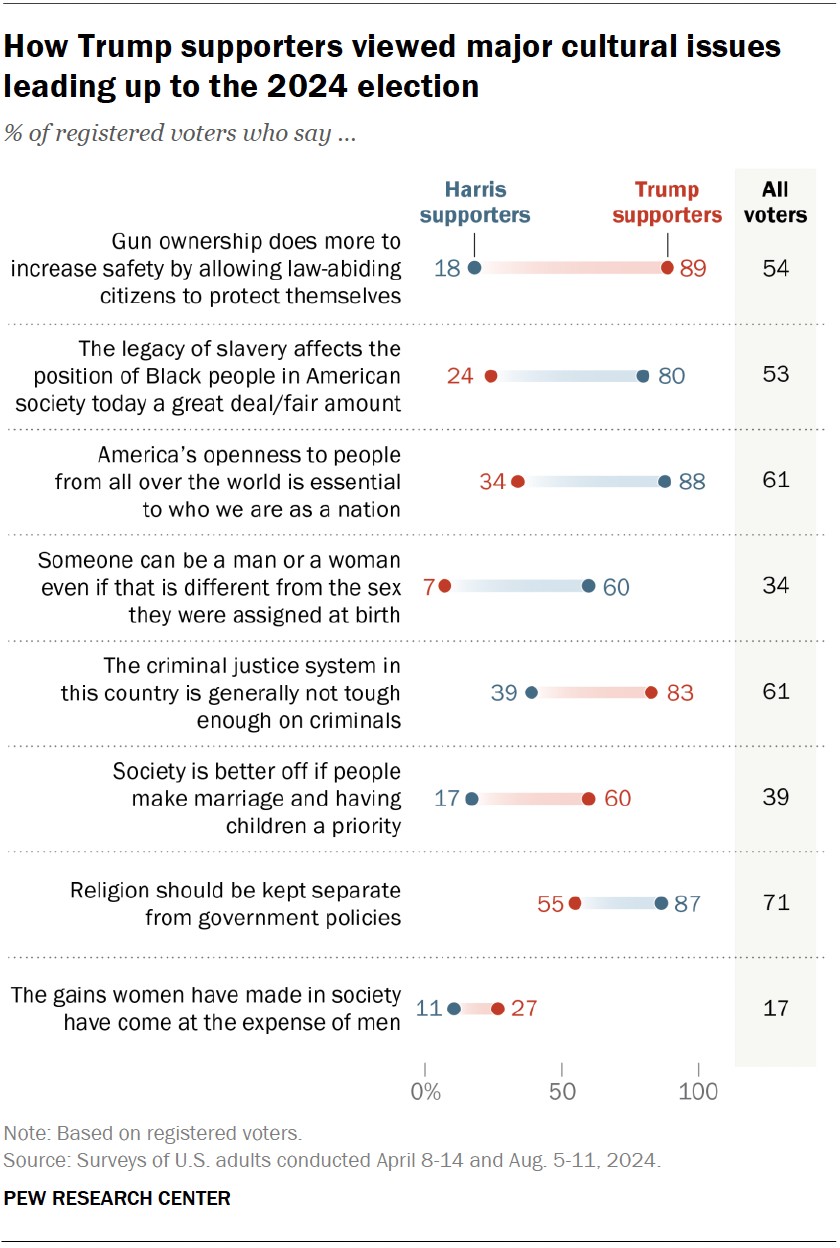
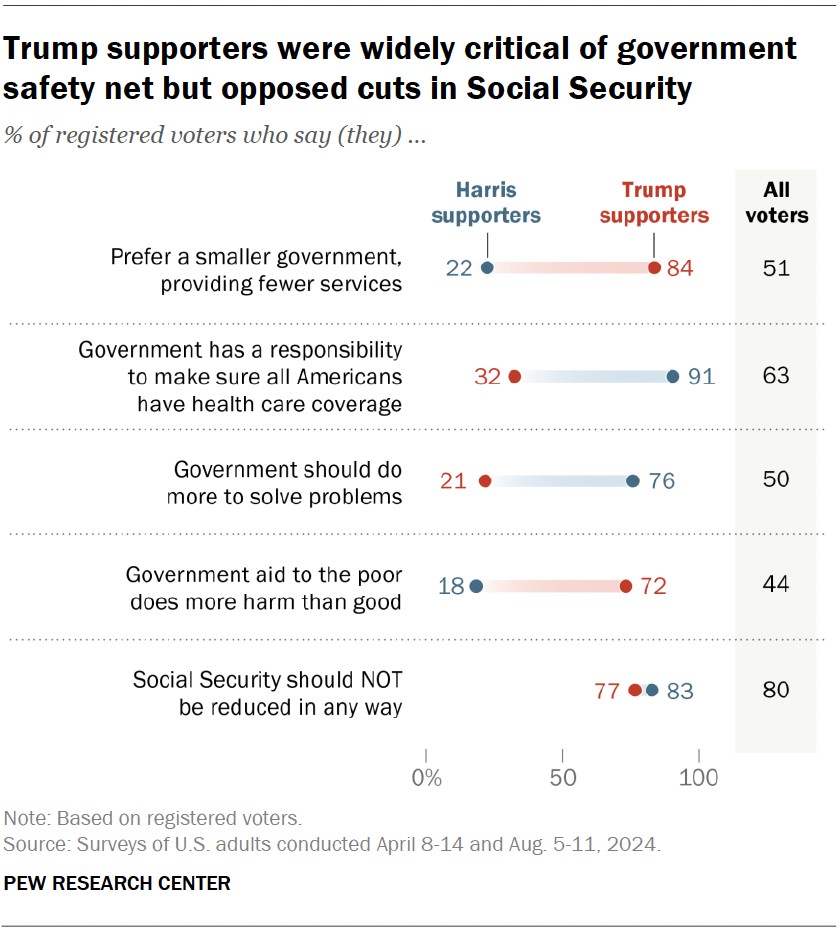
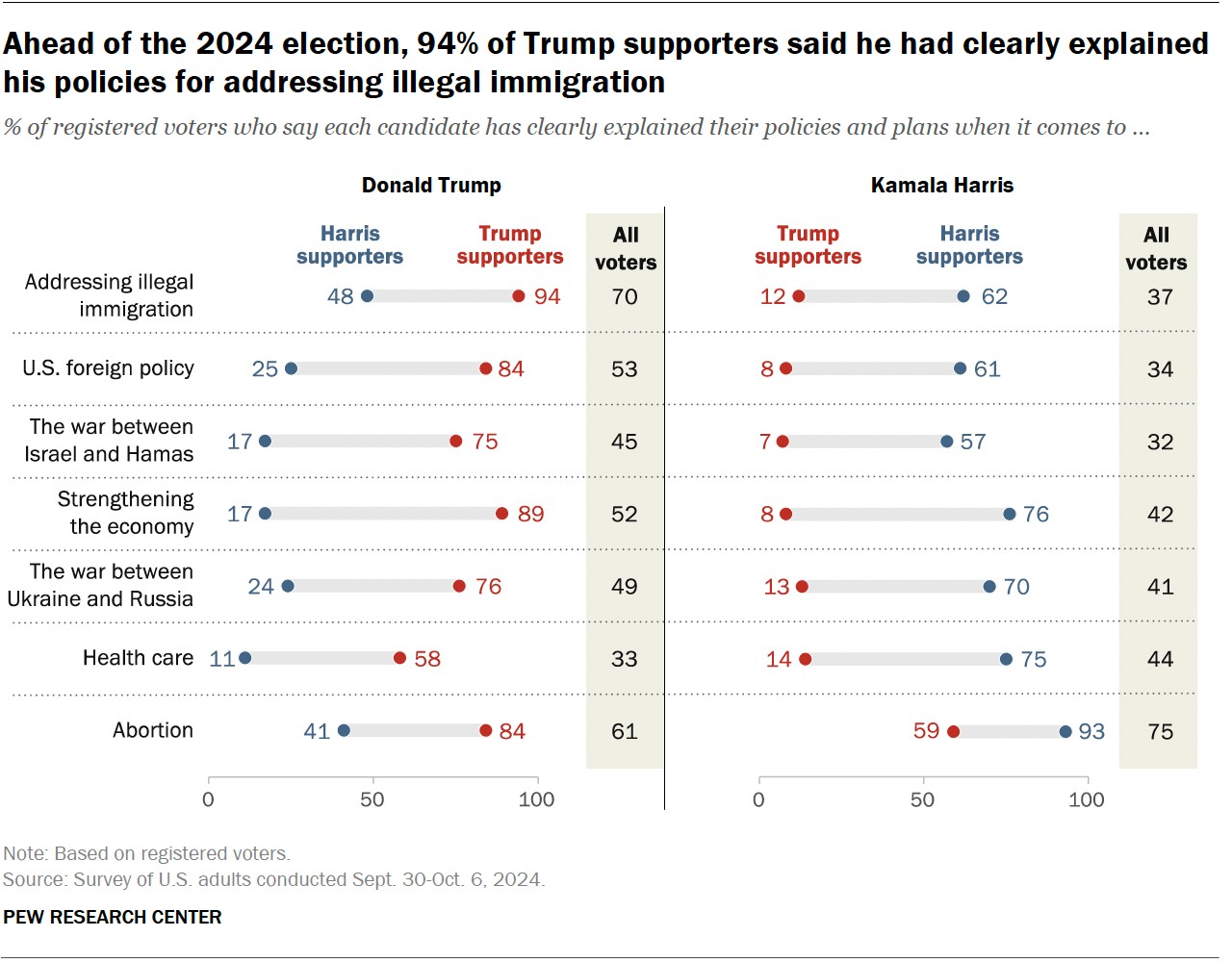
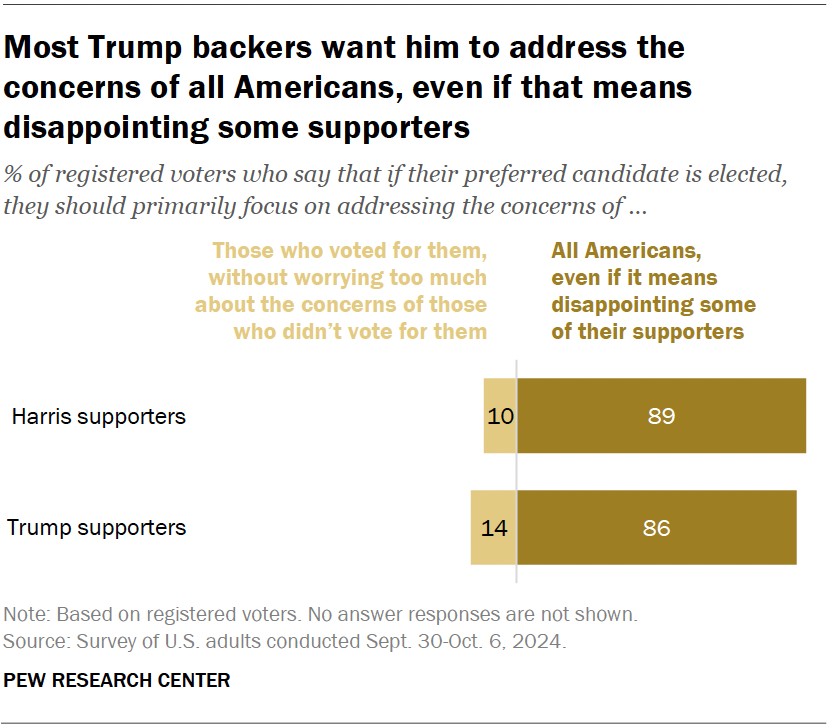
- Economic Growth: Supporters argued that the tax cuts would stimulate economic growth, leading to job creation and increased investment.
- Business Investment: The reduction in the corporate tax rate was intended to incentivize businesses to invest in the United States, creating jobs and boosting the economy.
- Criticisms: Critics argued that the tax cuts disproportionately benefited the wealthy and corporations, leading to increased income inequality and a larger national debt.
- Long-Term Impact: The long-term impact of the tax cuts on the economy is still debated, with some studies suggesting that they had a limited impact on economic growth.
4.2. Deregulation: Reducing Burdens or Endangering the Environment?
The Trump administration pursued deregulation across various sectors, arguing that it would reduce burdens on businesses and spur economic growth.
| Sector | Examples of Deregulation |
|---|---|
| Environment | Relaxed environmental regulations on coal-fired power plants, oil and gas drilling, and vehicle emissions. |
| Financial Services | Eased regulations on banks and financial institutions, including Dodd-Frank regulations. |
| Labor | Rolled back regulations on workplace safety, overtime pay, and union organizing. |
- Economic Benefits: Supporters argued that deregulation would reduce costs for businesses, leading to increased investment and job creation.
- Environmental Concerns: Critics argued that deregulation would harm the environment, leading to increased pollution and climate change.
- Worker Safety: Opponents argued that deregulation would endanger workers, leading to increased workplace accidents and injuries.
- Long-Term Impact: The long-term impact of deregulation on the economy and the environment is still being assessed, with some studies suggesting that it had mixed results.
4.3. Appointment of Conservative Judges: Shaping the Judiciary
Trump appointed a significant number of conservative judges to federal courts, including three Supreme Court justices.
| Court | Appointees |
|---|---|
| Supreme Court | Neil Gorsuch, Brett Kavanaugh, Amy Coney Barrett |
| Appeals Courts | Appointed a large number of conservative judges to circuit courts, shifting the balance of power. |
| District Courts | Appointed numerous conservative judges to district courts, further solidifying the conservative influence. |
- Judicial Philosophy: Trump’s judicial appointments were guided by a commitment to appointing judges who would interpret the Constitution according to its original meaning.
- Conservative Agenda: The appointment of conservative judges was seen as a way to advance a conservative agenda on issues such as abortion, religious freedom, and gun rights.
- Long-Term Impact: The impact of Trump’s judicial appointments will be felt for decades to come, as these judges will shape the law and legal precedent for years to come.
4.4. Trade Policies: Protecting American Industries?
The Trump administration pursued protectionist trade policies, imposing tariffs on goods from countries like China.
| Country | Tariffs Imposed |
|---|---|
| China | Imposed tariffs on billions of dollars worth of Chinese goods, sparking a trade war. |
| Canada | Imposed tariffs on Canadian steel and aluminum, citing national security concerns. |
| Mexico | Renegotiated the North American Free Trade Agreement (NAFTA) to create the United States-Mexico-Canada Agreement (USMCA). |
- Protecting American Jobs: Supporters argued that tariffs would protect American industries from foreign competition, leading to job creation and economic growth.
- Trade Deficit: Trump aimed to reduce the trade deficit by imposing tariffs on imported goods, encouraging domestic production.
- Criticisms: Critics argued that tariffs would harm consumers, leading to higher prices and reduced trade.
- Economic Impact: The economic impact of Trump’s trade policies is still debated, with some studies suggesting that they had a limited impact on the trade deficit and may have harmed the U.S. economy.
4.5. Immigration Policies: Securing the Border?
The Trump administration implemented a number of controversial immigration policies, including the construction of a wall on the U.S.-Mexico border and the separation of families at the border.
| Policy | Description |
|---|---|
| Border Wall | Promised to build a wall on the U.S.-Mexico border to deter illegal immigration. |
| Family Separation | Implemented a policy of separating families at the border, leading to widespread criticism. |
| Travel Ban | Implemented a travel ban on several Muslim-majority countries, citing national security concerns. |
- Border Security: Supporters argued that these policies would enhance border security and reduce illegal immigration.
- National Security: Trump argued that stricter immigration policies were necessary to protect the country from terrorism and crime.
- Criticisms: Critics argued that these policies were inhumane and violated international law.
- Impact on Immigration: The impact of these policies on immigration is still being assessed, with some studies suggesting that they had a limited impact on the overall number of immigrants entering the United States.
The policy achievements of the Trump administration had a significant impact on various sectors of society, shaping his support base and contributing to his enduring popularity.
5. Criticisms and Controversies: The Other Side of the Coin
To comprehensively address the question of why do people like Donald Trump, it is imperative to acknowledge the criticisms and controversies that have surrounded his presidency. These issues have undoubtedly influenced public perception and contributed to both support and opposition.
5.1. Allegations of Collusion with Russia: A Cloud of Suspicion
One of the most significant controversies of the Trump presidency was the investigation into alleged collusion between his campaign and Russia during the 2016 election.
- Mueller Investigation: Special Counsel Robert Mueller led an investigation into Russian interference in the 2016 election and potential collusion with the Trump campaign.
- Findings: The Mueller report found evidence of Russian interference but did not establish sufficient evidence to conclude that the Trump campaign conspired or coordinated with Russia.
- Obstruction of Justice: The Mueller report also examined whether Trump obstructed justice, but did not make a traditional prosecutorial judgment on the matter.
- Political Fallout: The allegations of collusion with Russia cast a cloud of suspicion over the Trump presidency and led to political divisions.
5.2. Impeachment Proceedings: Abuse of Power and Obstruction of Congress
Trump was impeached twice by the House of Representatives, once in 2019 and again in 2021.
- First Impeachment: The first impeachment in 2019 was based on allegations that Trump abused his power by pressuring Ukraine to investigate Joe Biden and his son Hunter, and that he obstructed Congress by refusing to cooperate with the impeachment inquiry.
- Second Impeachment: The second impeachment in 2021 was based on allegations that Trump incited an insurrection by encouraging his supporters to march on the Capitol on January 6.
- Senate Trials: Trump was acquitted by the Senate in both impeachment trials.
- Political Impact: The impeachment proceedings further polarized the country and deepened political divisions.
5.3. Controversial Statements and Rhetoric: Divisive Language
Trump was known for making controversial statements and using divisive rhetoric, which often sparked outrage and criticism.
- Racial Remarks: Trump made several remarks that were widely criticized as racist or insensitive, including his comments about “shithole countries” and his response to the Charlottesville white supremacist rally.
- Attacks on Opponents: Trump often attacked his political opponents in personal terms, using derogatory language and making unsubstantiated accusations.
- Misinformation: Trump frequently spread misinformation and conspiracy theories, particularly on social media, which was often amplified by his supporters.
- Impact on Political Discourse: Trump’s rhetoric was criticized for lowering the tone of political discourse and contributing to a climate of incivility and division.
5.4. Handling of the COVID-19 Pandemic: Criticism of the Response
Trump’s handling of the COVID-19 pandemic was widely criticized, with many arguing that he downplayed the severity of the virus and failed to take adequate steps to protect the public.
- Downplaying the Virus: Trump initially downplayed the severity of the virus, comparing it to the flu and suggesting that it would disappear on its own.
- Lack of Preparation: Critics argued that the Trump administration was slow to ramp up testing and production of personal protective equipment (PPE), leading to shortages and delays.
- Disinformation: Trump promoted unproven treatments for COVID-19, such as hydroxychloroquine, which were not supported by scientific evidence.
- Economic Impact: The COVID-19 pandemic had a significant impact on the U.S. economy, leading to job losses and business closures.
5.5. January 6th Capitol Attack: Incitement of Insurrection
The January 6th attack on the U.S. Capitol was a watershed moment in American history, and Trump’s role in the events leading up to the attack was heavily scrutinized.
- Rally Before the Attack: Trump held a rally near the White House on January 6, where he repeated false claims about the election and urged his supporters to march on the Capitol.
- Incitement of Violence: Critics argued that Trump’s rhetoric at the rally incited violence and encouraged his supporters to attack the Capitol.
- Response to the Attack: Trump was slow to condemn the attack and initially resisted calls to tell his supporters to stand down.
- Legacy: The January 6th attack on the Capitol will likely be remembered as one of the most significant and controversial events of the Trump presidency.
The criticisms and controversies surrounding the Trump presidency provide a more complete picture of his complex and often polarizing figure. These issues have undoubtedly influenced public perception and contributed to both support and opposition.
6. The Future of Trumpism: What Lies Ahead?
Understanding why do people like Donald Trump necessitates looking toward the future of Trumpism. Despite the controversies and criticisms, the political movement associated with Donald Trump continues to exert a significant influence on American politics.
6.1. Enduring Influence on the Republican Party
Trump’s influence on the Republican Party remains strong, with many Republican politicians aligning themselves with his policies and rhetoric.
- Trump’s Endorsements: Trump’s endorsements continue to be highly sought after by Republican candidates, demonstrating his enduring influence within the party.
- Policy Alignment: Many Republican politicians have adopted Trump’s policies on issues such as immigration, trade, and foreign policy.
- Rhetorical Style: Trump’s rhetorical style, characterized by populism and directness, has been emulated by many Republican politicians.
- Future Leadership: The future direction of the Republican Party will likely be shaped by the ongoing debate between traditional conservatives and Trump-inspired populists.
6.2. Potential Future Candidacies: A Return to Power?
There is ongoing speculation about whether Trump will run for president again in the future, which could have a significant impact on the political landscape.
- Trump’s Ambitions: Trump has hinted at the possibility of running for president again, keeping his supporters guessing about his future plans.
- Republican Primaries: If Trump were to run for president again, he would likely face a competitive primary field, as other Republican politicians seek to challenge him.
- General Election: If Trump were to win the Republican nomination, he would likely face a close and highly contested general election.
- Impact on the Country: A return of Trump to the presidency would likely have a significant impact on the country, both domestically and internationally.
6.3. The Rise of Populism: A Global Phenomenon
Trump’s rise to power was part of a broader global trend of populism, with similar movements emerging in countries around the world.
- Economic Discontent: Populist movements often arise in response to economic discontent and inequality, as voters feel left behind by globalization and technological change.
- Anti-Establishment Sentiment: Populist movements often tap into anti-establishment sentiment, as voters feel that the political system is corrupt and unresponsive to their needs.
- Nationalism: Populist movements often emphasize nationalism and patriotism, as voters seek to protect their national identity and culture.
- Authoritarian Tendencies: Some populist movements have been criticized for their authoritarian tendencies, as they seek to undermine democratic institutions and concentrate power in the hands of a single leader.
6.4. The Future of American Democracy: Challenges and Opportunities
The rise of Trumpism has raised important questions about the future of American democracy, including the role of truth, civility, and compromise in political discourse.
- Truth and Misinformation: The spread of misinformation and conspiracy theories has become a major challenge for American democracy, as it undermines trust in institutions and makes it harder for voters to make informed decisions.
- Civility and Polarization: The increasing polarization of American politics has made it harder to find common ground and compromise on important issues.
- Compromise and Gridlock: Political gridlock in Washington has made it difficult to address pressing challenges facing the country, such as healthcare, education, and climate change.
- Renewing Democracy: Renewing American democracy will require a renewed commitment to truth, civility, and compromise, as well as a willingness to engage in constructive dialogue across ideological divides.
The future of Trumpism is uncertain, but it is clear that the political movement associated with Donald Trump will continue to exert a significant influence on American politics for years to come.
7. Answering Frequently Asked Questions About Donald Trump’s Appeal
To provide a thorough understanding of why do people like Donald Trump, it is beneficial to address some frequently asked questions that arise when discussing his popularity and political influence.
1. What are the main reasons people support Donald Trump?
People support Donald Trump for various reasons, including his economic policies, stance on immigration, anti-establishment rhetoric, and appeal to conservative values.
2. How did Trump manage to connect with working-class voters?
Trump connected with working-class voters by promising to bring back manufacturing jobs, criticizing free trade agreements, and addressing their economic anxieties.
3. What role did social media play in Trump’s success?
Social media, particularly Twitter, allowed Trump to communicate directly with voters, bypassing traditional media outlets and controlling the narrative.
4. Why did evangelical Christians support Trump?
Evangelical Christians supported Trump because of his promise to protect religious freedom, appoint conservative judges, and oppose abortion.
5. What were some of the key policy achievements of the Trump administration?
Key policy achievements of the Trump administration included the Tax Cuts and Jobs Act, deregulation across various sectors, and the appointment of conservative judges.
6. What were some of the major criticisms and controversies of the Trump presidency?
Major criticisms and controversies included allegations of collusion with Russia, impeachment proceedings, controversial statements and rhetoric, and the handling of the COVID-19 pandemic.
7. How has Trump influenced the Republican Party?
Trump has had a significant influence on the Republican Party, with many Republican politicians aligning themselves with his policies and rhetoric.
8. What is the future of Trumpism?
The future of Trumpism is uncertain, but the political movement associated with Donald Trump will likely continue to exert a significant influence on American politics.
9. How did Trump’s communication style affect his popularity?
Trump’s communication style, characterized by populism, directness, and controversial statements, resonated with voters who were tired of traditional political correctness.
10. What is the legacy of the Trump presidency?
The legacy of the Trump presidency is complex and multifaceted, with both positive and negative aspects that will be debated for years to come.
Conclusion: Understanding the Complexities of Trump’s Appeal
Exploring why do people like Donald Trump reveals a complex interplay of economic, cultural, and political factors. His ability to tap into anti-establishment sentiment, promise economic revitalization, appeal to cultural conservatives, and communicate directly with voters played a significant role in his rise to power. His policies, while praised by some, were also met with criticism and controversy, adding to the complexity of his legacy.
At WHY.EDU.VN, we strive to provide comprehensive and unbiased analyses of complex issues like this, offering insights into understanding the motivations and values of various groups within society. We understand the challenges in finding accurate and reliable answers to your questions and aim to be a trusted platform where you can explore diverse perspectives and gain a deeper understanding of the world around you.
Do you have more questions or need further clarification on any of the topics discussed? Visit WHY.EDU.VN at 101 Curiosity Lane, Answer Town, CA 90210, United States, or contact us via WhatsApp at +1 (213) 555-0101. Our team of experts is ready to provide you with the answers you need and connect you with a community of learners who share your curiosity. Come explore, question, and discover with us at why.edu.vn.
